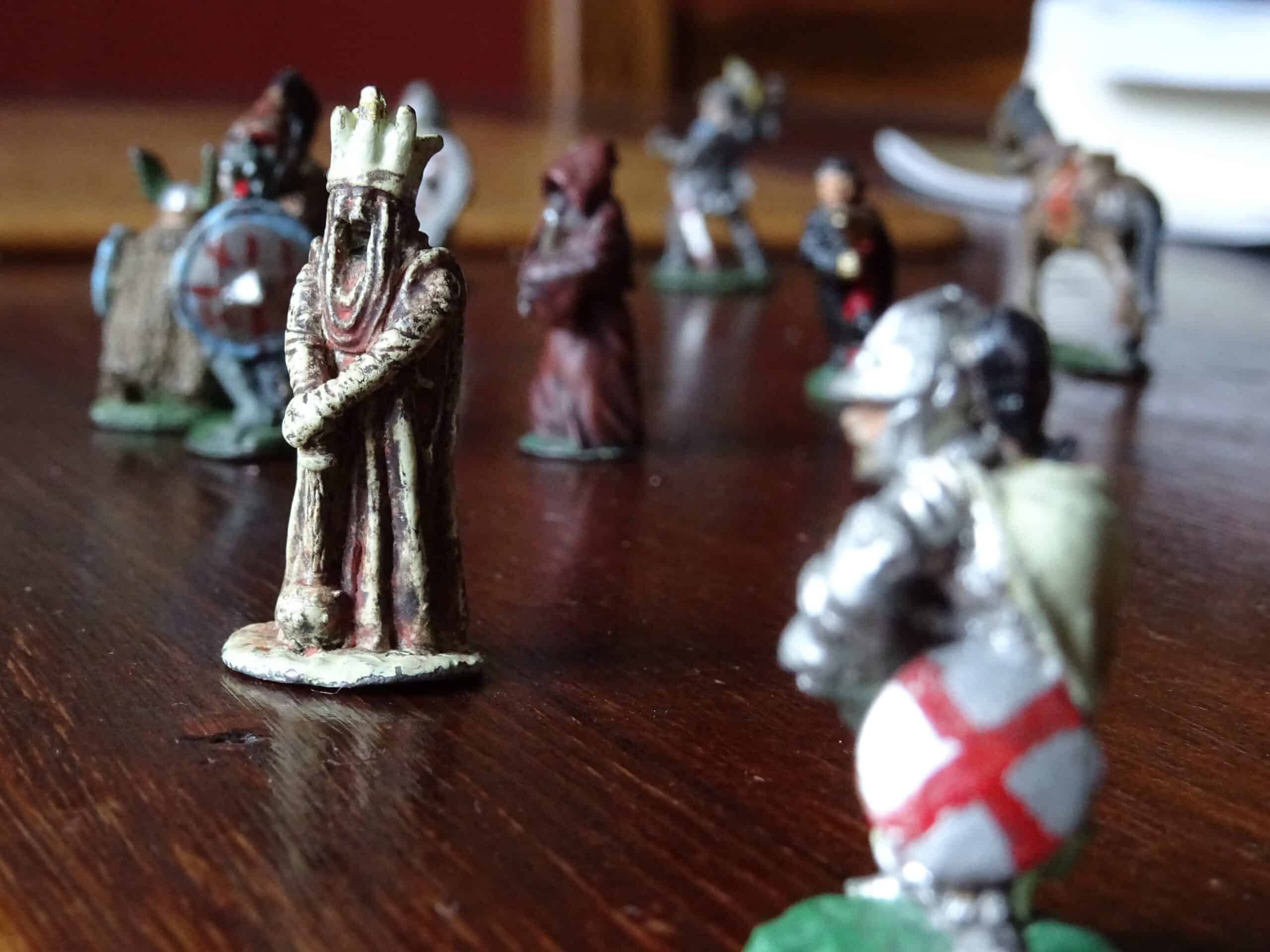You can often pick and choose between spells for your characters in D&D 5e, picking an arsenal of magic that will be dependent on who your character will be on the battlefield. An offensive spell caster will probably choose spells like fireball and ice knife to deal magical damage to their enemies. A defensive spellcaster will focus on spells like blessing and shield to buff their allies during combat, and a healer will choose healing spells. Continue reading our Teleport 5e Guide to learn everything you need to know about using Teleport in a game of D&D.
While some mixing and matching do happen, most spellcasters will have things they like to do on the battlefield and will select spells to fill that role for the party. However, some spells are spells that everyone must have, and Teleport is one of them. This is a very useful but also very complicated spell, and it does require some close reading to make sure you are using it effectively.
What Is Teleportation?
This is a very long spell, so we are doing to take it one part at a time. First, here are the main stats from the Player’s Handbook.
- :
- Arcane Tradition: Conjuration
- Casting Time: 1 action
- Range: 10 feet
- Components: V
- Duration: Instantaneous
- Classes: Bard, Sorcerer, Wizard
This teleportation spell instantly transports you and up to eight willing creatures of your choice that you can see within range, or a single object that you can see within range, to a destination you select. If you target an object, it must be able to fit entirely inside a 10-foot cube, and it can’t be held or carried by an unwilling creature.
The destination you choose must be known to you, and it must be on the same plane of existence as you.
First, it can be cast by a Bard, Sorcerer, or Wizard and takes one action to cast. It has a range of ten feet and only requires a vocal component. The teleportation is instantaneous and you can transport yourself and 8 willing creatures to a place that you know of. You can also teleport a single object, but the object must be able to fit entirely within a 10-foot cube. If a creature is unwilling to be teleported, they are not teleported and the associated object cannot be held or carried by an unwilling creature.
The people one is teleporting must be willing to be teleported, and in most cases, most party members and NPCs will want such teleporting. You can teleport to a place that you know of, as long as it is on the same plane of existence as you. That’s the first part of the spell, the mechanical side of things, but it gets more complicated as we read on.
Where Can You Teleport?

You need to be able to know about the location that you are teleporting to with your familiarity enhancing how well you teleport. If you know the area very well, such as your house, hometown, or any other area that you know a lot about, then you will be able to teleport there without too much trouble. Additionally, you can also teleport to a permanent teleport circle ( ) or a target object that you know is associated with it.
Now, the less you know about the area you are teleporting to, the higher the risk you have of not arriving successfully. The familiarity of the destination will affect how you teleport, but if you aren’t looking towards teleporting towards an area you know off, you can look at the rest of the spell’s description to see where you end up:
For context, a very familiar area is one you know of very well. It’s your home, your castle, your bedroom, the village you go to every summer for their pie. If you’ve been around it often, it’s familiar and you can teleport there at will. Familiar areas have a teleportation circle in them and you need to know of the sigil sequence to activate it.
Seen casually are areas you might have visited or read about in a book, but you aren’t too familiar with them. You might recall a place name or a landmark, but not much else.
Viewed once is a place you have only seen or been to once, and description relies on a third party to help you learn about it. You might have heard of the mythical pond’s location, but only in folk tales and legends and a poorly drawn map.
Finally, a false location simply doesn’t exist. Either you’ve been lied too about its location or you saw an illusion and thought it was a real place. When you try to teleport there you are just asking for bad things to happen to you!
Rolling On The Table
Depending on the familiarity that you have with the target object, the DM will roll on the teleporting table to see what will happen. The dice rolling is a D100, and you have a much higher chance of getting an ‘on target’ roll by knowing more about where you are teleporting. If you are very familiar with the target or know of a teleportation circle and its sigil sequence, then the chances for failure are non-existent.
However, the less you know about a target, the greater the chance you will have a mishap happen. Here are some teleportation mishaps that can happen to both your party and the objects that you are teleporting, according to the spell description.

Mishaps When Teleporting
Once the D100 is rolled, depending on the familiarity, then you have one of the 4 options happen to you. On target is whenever you will appear where you want to appear. This can be your home, a castle your party has stayed at, or a set teleportation circle.
All of these will give you a successful teleport regardless of the number rolled. Additionally, you can have an item associated with the place, such as a bedsheet, piece of decoration, or another personal item. If you have the item, it counts as a successful teleport to the location where the item belongs.
Off-target, you and your group are moved away from the target in a random direction, determined by the DM and a dice roll. The DM can roll a d8 and assign each number to points on a compass (North, South, East, West. Then Northeast and Northwest, and Southeast and Southwest). Depending on the role you have teleported in that direction away from the target a certain number of feet. You could end up a few miles away or a few hundred miles away, and then getting to your location becomes an adventure!
A similar area can be something similar to where you wanted to teleport. If you wanted to teleport to a castle in the woods, you might teleport to a castle in a completely different woodland. This can be a problem if you are teleporting to an evil lair or monster’s hideout because you could end up getting yourself into a completely different monster’s lair that you need to battle your way out of!
Finally, Mishaps give 3d10 force damage to every teleporting character and the object you are holding, Then the teleportation dice are rerolled and you see where you end up next. So not only are you damaged from the mishap but there’s a chance you could still end up far from your target.
Make Sure You Are Familiar With Where You Are Teleporting!
As you can see with the teleportation rules, the more familiar you are with the area you are transporting to, the less chance you have of a mishap or an accident happening during teleportation. Teleportation might not be the best transportation spell if you are looking to get into unfamiliar areas, but if you want to teleport your party from a familiar area to a familiar area, this is the perfect spell.
That being said, sometimes the mishaps from teleportation can add to the drama of the RP and also can warn your party about overreliance on teleporting from place to place. Sometimes walking is the best way to get from point A to point B, and that’s a lesson your party might need to learn the hard way!
Using Teleportation In Combat
Of course, teleporting items can be used to turn your character into a designated mail service, moving items from one area to another. However, you can also teleport in combat, even though it is a bit finicky.
Let’s say you see a 10 x 10 boulder, which fits the description of what you can teleport, and a rampaging dragon is running down the road. You could theoretically teleport the boulder above the dragon and let it fall, and your DM can use the rules for a collapsing roof to deal damage.

Teleportation can be a cool combat spell, but it does often require some conversation with your DM and clarification of the rules to make sure you can use teleportation to deal damage. And no, you can’t teleport enemy creatures, because nine times out of ten they are unwilling targets and you can’t teleport unwilling creatures.
Teleport FAQ
Question: How Is Teleport Useful?
Answer: Teleportation stops backtracking in a campaign. It will stop your party from having to go between town A and town B whenever they need to talk to that one NPC again and again and again for quests and information about the world. Additionally, it can be a great way to reduce travel time whenever the characters are too strong for random encounters, or if they need to have time be of the essence.
Most of the time Teleport isn’t a spell that is used every single time travel is needed, but whenever your party needs to cross long distances in a hurry, teleportation can be really helpful.
Question: How Do I Increase Familiarity With A Location?
Answer: Much like in the real world, you can gain familiarity with a location by visiting the location multiple times and by getting to know the people there. It will take a lot of time to improve your familiarity with the location, but you might be able to within a campaign. However, you can also snatch an item from the location and also use that as a focus to teleport.
Finally, you can create or find a permanent teleportation circle, which will allow you to teleport towards the circle regardless of your familiarity with the location. Think of it as a fast travel option in a videogame, where if your characters know about multiple teleportation circles, then they can teleport from circle to circle.
Question: How Does a DM Stop Teleport from Being Overused?
Answer: Of course, some parties tend to overuse certain spells, and teleport is no exception. If your party is using teleport for short journeys as well as long journeys, this can stop them from gaining experience from encounters, exploring new lands, and finding new things off the beaten path. If you want to stop the overuse of teleporting around, then here are some things you can do.
Spells such as Forbiddance can be used to stop teleportation and planar travel, and the teleportation circles can be destroyed by powerful magic. In fact, that can also be the plot of your entire adventure if you want.
Additionally, if your characters are constantly teleporting from place to place over and over again, maybe they can be intercepted. Or planar shifting enemies can sense when the party teleports along their predictable route and then they launch an ambush at one end or the other. That can be a cool encounter!
Other ways to stop teleportation from being overused include having the very act of teleportation be banned. Maybe so much teleportation is damaging the magical weave, so any teleportation is frowned upon and an interplanar police force shows up to attack or detain any characters who do so.
Additionally, not every single location is going to be familiar to your characters. They could land miles away from their destination, they could land somewhere else that is familiar but not their location or they could have their teleportation marred by mishaps right as they land into the monster’s lair.
Rather than simply banning teleportation magic and all the good it can do, make teleportation harder to pull off and you have an adventure.
- DnD Demons Guide: What Are Demons in 5e? - September 18, 2021
- Detect Thoughts 5e Guide: When, Why and How to Use It - September 9, 2021
- The Ultimate DnD Toll the Dead 5e Guide - September 9, 2021

